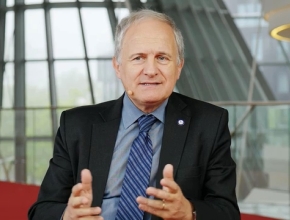When should we check if Helicobacter pylori eradication therapy was successful? In particular, should we do it in patients with dyspepsia?
Paul Moayyedi: In my practice I do not. I will check certainly in population screening that I mentioned (see H pylori eradication in everyone?; H pylori: Transmission and reinfection after successful treatment). In high-risk countries you should never do that. That would not make any cost-effective sense.
In clinical practice when you are doing this for dyspepsia, if the patients have peptic ulcer disease, then you should. This is obviously serious. They can bleed from peptic ulcers in the future, and you want to ensure that they have a low risk of ulcer recurrence, so you would check for successful H pylori eradication. You would also check in the case of mucosa-associated lymphoid tissue (MALT) lymphoma, of course.
When it is just for dyspepsia, particularly as a test-and-treat strategy and noninvasive approach, if they are feeling well, I leave them alone. Most will have eradication and you do not want to create this massive concern if there is still H pylori present. But this is my practice. Guidelines differ on this.
 English
English
 Español
Español
 українська
українська











